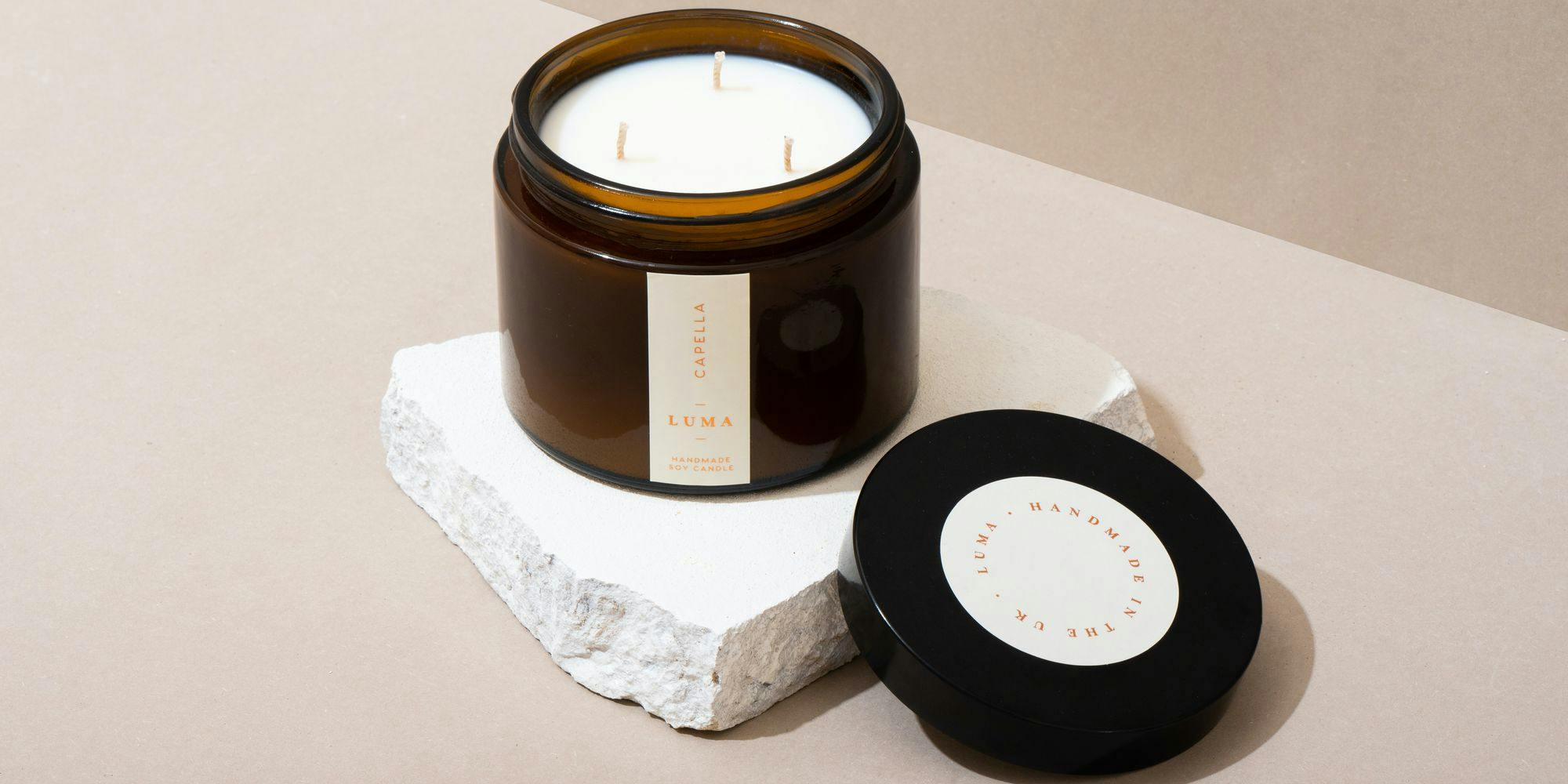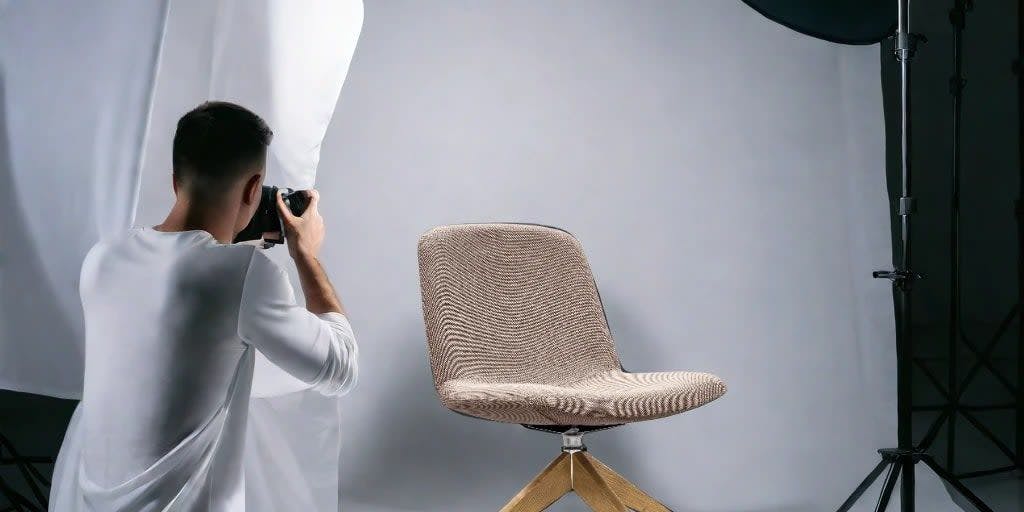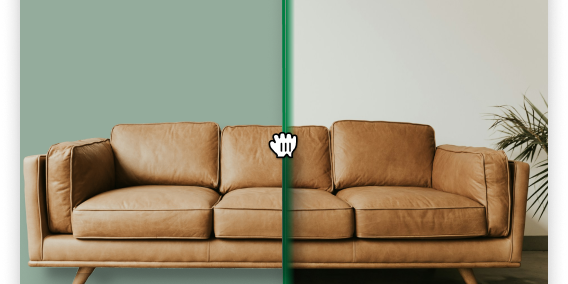A Guide to Product Photos for E-Commerce



Boost your sales with the perfect product photo! Get effective tips and strategies for capturing high-quality product photos for your business.
Product photography is essential for e-commerce businesses. It plays a crucial role in catching the attention of customers and making a good first impression. Great product photos are a deciding factor for customers to stay on your website and make a purchase. It is important to invest in high-quality product photography to showcase the quality and value of your products and establish transparency in your online business.
Key Takeaways:
- Investing in high-quality product photography is crucial for e-commerce businesses.
- Great product photos help to catch the attention of customers and make a good first impression.
- There are different types of product photos which address different needs for your e-commerce business.
- You can create stunning product photos in-house with the correct setup and editing tools like AI photo editors or use professional product photography services.
- Optimization for multiple criteria like resolution, compression and dimension is necessary for best-performing product photos.
- Each e-commerce channel like Amazon, Shopify, WooCommerce or social media channel like Instagram has their own requirements for ideal product photos.
Importance of Product Photography for E-commerce
When it comes to selling products online, the role of product photography cannot be underestimated. In the absence of physical stores where customers can see and touch products, e-commerce businesses heavily rely on product photos to attract and engage customers. High-quality product photos are essential in creating a positive first impression and increasing the likelihood of conversion.
Investing in professional product photography services can make a significant difference in the success of your online store. Professionals have the expertise and equipment to capture visually appealing images that showcase your products in the best possible way. They understand how to highlight the features and details that matter most to customers, creating a compelling visual representation that can drive sales.
However, it's not just about capturing great images. Optimizing product photos for online platforms is equally important. By optimizing image size, resolution, and format, you can ensure that your product photos load quickly on e-commerce websites, providing a seamless and enjoyable shopping experience for customers.
Investing in product photography services and optimizing product images can be a game-changer for your e-commerce business. It not only helps you stand out from the competition but also builds trust and credibility with your target audience. Remember, when it comes to e-commerce, a picture is truly worth a thousand words.
Types of Product Photography
Product photography encompasses various styles and techniques, each serving a specific purpose in showcasing products effectively. Understanding the different types of product photography can help you choose the right approach for your e-commerce business. Let's explore some common types:
1. Individual Product Shots
Individual product shots focus on capturing a single product in detail. These photos highlight the product's features, design, and craftsmanship, providing customers with a clear view of what they can expect. Individual shots are particularly effective for products with intricate details or unique selling points.
2. Group Shots
Group shots display multiple products together, usually products from the same collection or category. This type of photography allows customers to see the range of products available and compare different options. Group shots can be useful for showcasing product variations, such as different colors or sizes.
3. Lifestyle Shots
Lifestyle shots depict products in real-life settings, showing customers how the products can be used or integrated into their daily lives. These photos create a sense of aspiration and help customers visualize themselves owning and using the products. Lifestyle shots are especially effective for products that evoke a certain lifestyle or offer a unique experience.
4. Scale Shots
Scale shots provide customers with a reference point by comparing the size of a product to everyday objects. This helps customers understand the product's dimensions and make informed decisions about its suitability for their needs. Scale shots are particularly beneficial for products where size matters, such as furniture or electronics.
5. Detailed Shots
Detailed shots zoom in on specific features or elements of a product, highlighting their quality and craftsmanship. These close-up images allow customers to examine the finer details and make judgments about the product's value. Detailed shots are ideal for products with intricate designs or unique selling points.
6. Packaging Shots
Packaging shots showcase the product's packaging, creating a complete visual presentation. These photos help customers understand how the product will be delivered and the level of care taken in packaging it. Packaging shots can also convey important information about the product, such as additional accessories or bonus items included.
Each type of product photography serves a specific purpose and can be used strategically to showcase your products and engage customers effectively. Consider your product's unique features, target audience, and marketing goals when selecting the appropriate type of product photography for your e-commerce business.
Product Photography Process and Tips
When it comes to product photography, following a structured process and incorporating useful tips can help you capture high-quality images that effectively showcase your products. Whether you are a DIY photographer or working with professional equipment, here are some steps and tips to enhance your product photography:
1. Set Up Your Photography Studio
Creating a dedicated space for product photography can make a significant difference in the quality of your images. Find a well-lit area with natural light or invest in artificial lighting equipment. Set up a clean and clutter-free background, such as a seamless white backdrop or a specific colored backdrop that complements your product. Use a tripod to stabilize your camera and ensure sharp images.
2. Prepare Your Product for a Photoshoot
Before photographing your product, make sure it is clean and free of any dust or fingerprints. Pay attention to small details such as aligning labels or fixing any imperfections. Depending on your product, you may need to use props or styling elements to enhance the overall presentation. Experiment with different angles, compositions, and arrangements to capture the best features of your product.
3. Master Lighting Techniques
Lighting is key to creating visually appealing product photos. Whether you choose natural light or artificial light sources, aim for even and diffused lighting that minimizes harsh shadows. Consider using additional lighting tools such as reflectors or diffusers to control the intensity and direction of light. Experiment with different lighting setups to highlight the unique features and textures of your product.
4. Use Appropriate Camera Settings
Adjusting your camera settings is essential for achieving the desired image quality. Set your aperture to control the depth of field and focus on the product details. Adjust the ISO to maintain optimal image quality while managing the amount of light in your photos. Experiment with different shutter speeds to capture sharp, well-exposed images. Understanding your camera settings and their impact on the final image will help you achieve consistent and professional-looking product photos.
Following these steps and incorporating these tips into your product photography process can lead to more captivating and impactful images. Remember to experiment, practice, and continuously refine your techniques to achieve the best results for your e-commerce business.
Tips for Setting up a Product Photography Background
Setting up the right background is crucial for capturing professional and high-quality product photos. The background plays a significant role in drawing attention to the product and creating a visually appealing image. A white or light-colored background is commonly used as it helps to keep the focus on the product and simplifies the editing process.
There are several options for setting up a product photography background. One option is to use a shooting table, which provides a flat surface and creates a seamless transition between the vertical and horizontal planes of the background. Another option is to create a homemade backdrop using white craft paper or fabric. This allows for more flexibility in terms of size and can be easily replaced if it gets dirty or damaged. The last option is using an AI product background generator for creating a wide range of background designs with text prompts.
Tips for setting up a product photography background:
- Choose a white or light-colored background to keep the focus on the product.
- Use a shooting table or create a homemade backdrop using white craft paper.
- Ensure a clean and seamless transition between the vertical and horizontal planes of the background.
For larger products, a stand-mounted sweep or a light tent can be used to create a clean and professional background. These setups provide a controlled environment to eliminate unwanted shadows and reflections, resulting in high-quality product photos.
Remember, the background sets the stage for your product, so it is important to choose a background that complements the product's aesthetics and creates a cohesive visual presentation.
Tips for Setting up the Product for Photography
When it comes to product photography, setting up your product correctly is crucial to capturing the best shots. Here are some tips to help you get started:
- Positioning: Place your product in front of a suitable background and ensure it is centered. This will create a focused composition and draw attention to the product itself.
- Stability: Use a flat and stable surface to avoid any unwanted movement or wobbling during the photoshoot. This will help maintain clarity and sharpness in your images.
- Additional tools: Depending on the type of product you are photographing, you may need to use additional tools to enhance its presentation. For example, you can use glue dots or tape to hold small items in place, mannequins or hangers for clothing, or models for lifestyle shots.
By paying attention to these details and ensuring your product is well-positioned and centered, you can capture high-quality product photos that effectively showcase your products.
Tips for Product Image Size Optimization
Optimizing your product images for online platforms is essential to ensure they load quickly and display beautifully across different devices. Here are some tips for product image size optimization:
- Resolution: Find the right balance between image resolution and file size. High-resolution images may look great, but they can slow down page loading times. Experiment with different resolutions to find the optimal size without sacrificing image quality.
- Compression: Use image compression techniques to reduce file size without significantly affecting image quality. There are various online tools and software available that can help you compress your product images effectively.
- Dimensions: Resize your images to match the dimensions required by the specific platform or website you are using. This will ensure your product images fit perfectly within the designated image areas and look professional.
By optimizing your product images for size, you can create a seamless and visually appealing experience for your customers, ultimately enhancing their overall shopping experience. In cases where you only have low-resolution photos, an AI image enhancer can help you obtain the ideal image quality.
Tips for Lighting in Product Photography
Lighting is a crucial element in product photography as it can make or break the final result. The right lighting helps to highlight the product's features, create a visually appealing image, and convey the desired mood. When it comes to lighting options, you have two main choices: natural light and artificial light. Let's take a closer look at each option:
Natural Light:
Natural light, such as sunlight, can be a great source of soft and flattering illumination for your product photos. Shooting outdoors or near a window allows you to take advantage of the natural light's gentle and even distribution. It can create a sense of authenticity and realism, especially for lifestyle product shots. However, keep in mind that natural light can be unpredictable, so you may need to adjust your shooting schedule according to the time of day and weather conditions.
Artificial Light:
Artificial light, such as light bulbs or studio strobes, provides a controlled and consistent light source for product photography. This option gives you greater flexibility in terms of positioning the light and adjusting its intensity. Continuous light setups allow you to see the effects in real time, making it easier to achieve the desired lighting style. Studio strobes, on the other hand, provide powerful and adjustable bursts of light, ideal for capturing intricate product details. Experimenting with different artificial light setups can help you create the perfect lighting setup for your products.
Ultimately, the choice between natural light and artificial light depends on the specific requirements of your product photos and the desired effect you want to achieve. It's essential to experiment with different lighting setups and techniques to find the perfect balance that enhances your product's visual appeal and effectively communicates its features to your target audience.
Tips for Reducing Shadows in Product Photography
Shadows can sometimes be a challenge in product photography, as they can obscure important product details and affect the overall presentation. However, there are techniques you can use to reduce shadows and create well-lit product images that showcase your products in the best possible way. Here are some tips to help you minimize shadows in your product photography:
1. Use Fill Lights
Fill lights are additional light sources that help brighten up the shadow side of the product. By positioning fill lights strategically, you can minimize the impact of shadows and achieve a more evenly lit image. Experiment with the angle, intensity, and placement of fill lights to find the right balance and reduce shadows effectively.
2. Utilize Bounce Cards
Bounce cards are surfaces, often white or reflective, that bounce light back into the shadows to provide a more balanced lighting effect. By placing bounce cards strategically around your setup, you can redirect light onto the shadowed areas and reduce the intensity of shadows. This technique helps create a more even distribution of light and minimizes the impact of shadows on your product photos.
3. Adjust the Lighting Setup
Experiment with different lighting setups to find the one that reduces shadows the most effectively. This may involve adjusting the angle and position of your main light source, fill lights, and bounce cards. By fine-tuning the lighting setup, you can minimize shadows and achieve the desired lighting effect for your product photos.
4. Generate Shadows using AI
The latest AI product shadow technology lets you create realistic shadows without the hassle of setting up complex lighting setups.
By implementing these tips and techniques, you can reduce shadows in your product photography and ensure that your products are showcased in the best possible light.
Creative Ideas for Product Photography
When it comes to product photography, thinking outside the box and exploring creative ideas can make your images stand out and capture the attention of customers. Incorporating lifestyle product photos and utilizing AI technology can add a unique touch to your e-commerce product photography, enhancing the overall appeal and engagement. Here are some creative ideas to consider:
1. Lifestyle Product Photos
Showcasing your product in real-life settings through lifestyle photos can help customers imagine themselves using or experiencing your product. Whether it's showcasing a piece of clothing being worn, a product in action, or a product being used in a specific context, lifestyle photos can create a connection with your target audience and make your products more relatable.
2. Utilizing AI Technology
AI technology has revolutionized the way we approach product photography. From generating realistic mockups to editing and enhancing product photos, AI can add a unique touch to your e-commerce product photography. By leveraging AI-powered applications and software, you can automate processes such as background removal, color correction, and retouching, saving time and producing high-quality product photos.
3. Experimenting with Angles and Compositions
Don't be afraid to get creative with the angles and compositions of your product photos. Exploring different perspectives and compositions can create visually appealing and engaging images that capture the attention of customers. Try shooting from different heights, using props or unique backgrounds, or capturing close-ups of product features to add variety and interest to your product photography.
4. Showcasing Product Diversity
If your product comes in different variations or styles, highlight the diversity through your product photography. Showing different color options, styles, or sizes can help customers make informed purchasing decisions and give them a better understanding of the product's versatility. This can be done through group shots, comparison images, or separate product photos that showcase each variation.
By incorporating these creative ideas into your product photography, you can create visually appealing and engaging images that attract customers and drive sales. Remember to stay true to your brand and target audience while experimenting with different styles and approaches. With a bit of creativity and innovation, your product photos can make a lasting impression on customers and set your e-commerce business apart from the competition.
Benefits of Professional Product Photography Services
When it comes to showcasing your products online, high-quality images are essential. Investing in professional product photography services can offer numerous benefits for your e-commerce business. Professional photographers have the expertise and equipment to capture images that effectively showcase your products and appeal to your target audience.
One of the main advantages of professional product photography is the ability to create visually appealing and engaging images. Professional photographers have an eye for composition, lighting, and styling, which can make a significant difference in the final result. These high-quality images can grab the attention of potential customers and create a positive first impression, increasing the likelihood of them making a purchase.
In addition to capturing stunning images, professional product photographers can also provide additional services such as retouching and image optimization. They have the skills to enhance the images, ensuring that they meet your brand's aesthetic and standards. This can include removing imperfections, adjusting colors, and optimizing the images for different platforms, such as e-commerce websites or social media.
Furthermore, professional product photographers can ensure consistent and cohesive branding across your product images. They can help you establish a unique visual style that represents your brand and creates a recognizable identity. Consistency in your product images can enhance your brand's credibility and build trust with your customers.
Hiring professional product photography services can also save you time and allow you to focus on other aspects of your business. Instead of spending hours trying to capture the perfect shot or editing images yourself, you can rely on the expertise of professionals who specialize in product photography. This allows you to allocate your time and resources more effectively, ultimately benefiting your overall business operations.
Optimizing Product Photos for E-commerce Platforms
To attract more customers and improve sales on e-commerce platforms like Amazon, Shopify, Etsy, and WooCommerce, it is crucial to optimize your product photos. Each platform has its own image requirements, and by ensuring your product photos are properly optimized, you can enhance their visibility, searchability, and overall user experience.
Here are some key tips for optimizing your product photos:
1. Resize Images:
Resize your product photos according to the platform's specifications. This ensures that your images are displayed correctly and load quickly, improving the user experience.
2. Compress File Sizes:
Compressing the file size of your product photos helps to reduce loading times and improve website performance. Use image compression tools or plugins to maintain image quality while reducing file size.
3. Add Alt Text:
Include descriptive alt text for each product image. Alt text provides alternative text that is displayed if the image fails to load, improving accessibility and SEO.
4. Properly Name Image Files:
Give your image files descriptive names that accurately reflect the product. This not only helps with SEO but also makes it easier for search engines and customers to understand the content of the image.
5. Provide Multiple Views:
Include multiple images of your product from different angles or perspectives. This allows customers to get a better idea of what the product looks like and helps build trust in the quality and authenticity of your products.
6. Use High-Quality Images:
Ensure your product photos are of high quality and visually appealing. Invest in professional product photography or use high-resolution images to showcase your products in the best possible way.
Platform & Image Requirements
- Amazon: Minimum 1000 x 1000 pixels, white background, JPEG format
- Shopify: Recommended 2048 x 2048 pixels, square or 4:3 ratio, JPEG or PNG format
- Etsy: Minimum 2000 x 2000 pixels, square or rectangular, JPEG format
- WooCommerce: Depends on the theme and settings, but recommended minimum of 800x800 pixels for standard products or 2000x2000 for higher detail.
By following these optimization tips and adhering to platform-specific guidelines, you can ensure that your product photos stand out, attract more customers, and drive sales on e-commerce platforms.
Enhancing Product Photos with AI Technology
In today's digital age, the use of AI technology has revolutionized various industries, and product photography is no exception. By leveraging AI-powered applications and software, businesses can now enhance their product photos and create high-quality images that capture the attention of customers. Whether it's editing, retouching, or generating 3D renderings, AI technology offers a range of capabilities that can significantly improve the overall quality and appeal of product photos.
Product Photo Editing with AI
AI technology can automate the process of editing product photos, saving businesses valuable time and effort. With AI-powered applications, you can easily remove backgrounds, adjust colors, and enhance details to create visually stunning images. These automated editing tools not only save time but also ensure consistent results across multiple product photos.
Product Photo Enhancement with AI
AI technology can also enhance product photos by automatically correcting lighting, reducing noise, and improving overall image quality. By utilizing AI algorithms, you can achieve professional-level enhancements that make your products stand out. AI can help sharpen details, enhance colors, and even add depth to your photos, making them more visually appealing to potential customers.
Additionally, AI technology can generate realistic mockups and 3D product renderings, allowing customers to visualize products in different settings and angles. This immersive experience can greatly influence purchasing decisions and increase customer satisfaction.
Benefits of AI Technology in Product Photography
- Time-saving: AI-powered editing and enhancement automate repetitive tasks, reducing the time spent on manual image editing.
- Consistency: AI algorithms ensure consistent results across large volumes of product photos, maintaining a cohesive brand image.
- Quality improvement: AI can enhance image quality, optimize lighting, and bring out finer details, resulting in high-quality product photos.
- Cost-effective: By utilizing AI technology, businesses can achieve professional-level results without the need for expensive equipment or professional photographers.
- Increased customer engagement: AI-generated 3D renderings and realistic mockups provide customers with a more immersive shopping experience, leading to higher engagement and conversion rates.
Integrating AI technology into your product photography workflow can unlock a world of possibilities and enhance the visual appeal of your products. By leveraging AI-powered editing and enhancement tools, you can create high-quality product photos that capture the attention of customers and drive sales for your e-commerce business.
Using Lifestyle Product Photos for Social Media
When it comes to social media marketing, lifestyle product photos can be your secret weapon. These photos showcase your products in real-life settings, allowing potential customers to envision themselves using or experiencing the product. Platforms like Instagram provide the perfect opportunity to share these high-quality lifestyle photos and engage with your audience.
By incorporating lifestyle product photos into your social media marketing strategy, you can increase brand awareness, attract more followers, and ultimately drive traffic to your e-commerce store. These visually appealing and relatable images create a connection with your audience, making them more likely to engage with your brand and convert into customers.
When sharing lifestyle product photos on social media, make sure to use compelling captions and relevant hashtags to reach a wider audience. Encourage your followers to tag friends or share their own experiences with your products. Engaging with your audience through comments and messages will further strengthen the connection and build trust.
Showcasing Your Products on Instagram
Instagram is an ideal platform for sharing lifestyle product photos due to its visually focused nature. To make the most of Instagram for your business, consider the following tips:
- Post consistently: Regularly sharing new lifestyle product photos will keep your followers engaged and attract new ones. Aim for a consistent posting schedule that aligns with your audience's activity times.
- Use relevant hashtags: Research and use popular hashtags that are relevant to your products and target audience. This will help increase the visibility of your posts and attract users who are interested in your niche.
- Collaborate with influencers: Partnering with influencers who align with your brand can help amplify the reach of your lifestyle product photos. Their endorsement and promotion can introduce your products to a wider audience and generate more engagement.
Remember, the key to successful social media marketing with lifestyle product photos is to create content that resonates with your target audience. By showcasing your products in real-life situations, you can inspire and captivate your followers, ultimately driving them towards making a purchase.
Conclusion
Investing in professional product photography is essential for the success of your e-commerce business. By capturing high-quality product photos, you can create a positive first impression, attract customers, and increase sales. Understanding the different types of product photography and setting up a suitable background are key factors in showcasing your products effectively.
Optimizing lighting and utilizing AI technology can further enhance the quality of your product photos. Professional product photography services provide expertise, resources, and additional services like retouching and image optimization, resulting in polished and visually appealing images. Optimizing your product photos for e-commerce platforms is crucial to improving visibility and user experience.
Great product photos have a significant impact on sales and conversion rates. They attract customers, instill confidence, and provide valuable information for purchasing decisions. By prioritizing high-quality product images, you can improve the success of your e-commerce store and drive business growth.



